 W
WAdvanced Photovoltaic and Electronics Experiments, also known as APEX, was a satellite-based science mission launched into Low Earth orbit on August 3, 1994, by a Pegasus rocket. The mission successfully tested the use of photovoltaic and electronic components in space.
 W
WThe Aeronomy of Ice in the Mesosphere (AIM) is a satellite originally launched to conduct a 26-month study of noctilucent clouds (NLCs). Its mission was extended, and as of 2021 is still operational. It is the ninetieth Explorer program mission and is part of the NASA-funded Small Explorer program (SMEX). On April 25, 2007 AIM was boosted into a 600 km (370 mi) high polar orbit by a Pegasus-XL rocket, which was air-launched from the Lockheed L-1011 Stargazer aircraft operated by Orbital Sciences.
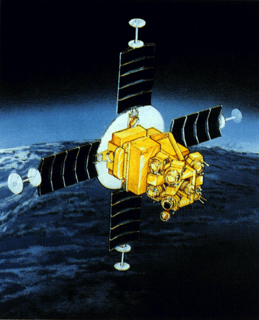 W
WThe Array of Low Energy X-ray Imaging Sensors X-ray telescope featured curved mirrors whose multilayer coatings reflected and focused low-energy X-rays or extreme ultraviolet light the way optical telescopes focus visible light. The satellite and payloads were funded by the United States Department of Energy and built by Los Alamos National Laboratory in collaboration with Sandia National Laboratories and the University of California-Space Sciences Lab. The satellite bus was built by AeroAstro, Inc. of Herndon, VA. The Launch was provided by the United States Air Force Space Test Program on a Pegasus Booster on April 25, 1993. The mission was entirely controlled from a small groundstation at LANL.
 W
WDART, or Demonstration for Autonomous Rendezvous Technology, was a NASA spacecraft with the goal to develop and demonstrate an automated navigation and rendezvous capability. At the time of the DART mission, only the Roscosmos and JAXA had autonomous spacecraft navigation. Orbital Sciences Corporation (OSC) was the prime contractor for construction, launch and operation of the DART spacecraft with a project cost of US$110 million (2005). The contract was awarded in June 2001 and the spacecraft was launched on 15 April 2005. The mission ended prematurely, very shortly after an anomalous slow-velocity collision with its target spacecraft, having completed less than half of the original mission autonomous rendezvous objectives.
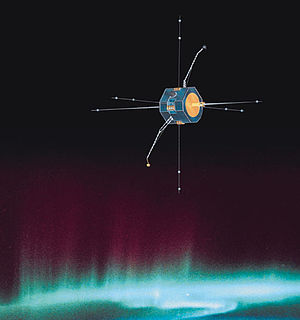 W
WThe Fast Auroral Snapshot Explorer (FAST) was a NASA plasma physics satellite, and was the second spacecraft in the Small Explorer program. It was launched on August 21, 1996, from Vandenberg Air Force Base aboard a Pegasus XL rocket. The spacecraft was designed and built by NASA's Goddard Space Flight Center. Flight operations were handled by Goddard for the first three years, and thereafter were transferred to the University of California, Berkeley's Space Sciences Laboratory.
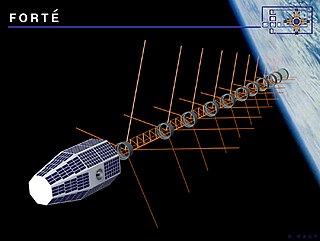 W
WThe Fast On-orbit Rapid Recording of Transient Events is a lightweight satellite which was launched at about 8:30 AM on August 29, 1997 into a circular 800-kilometer (500 mi) low Earth orbit which is inclined 70 degrees relative to the Earth's equator, using a Pegasus XL rocket. It was developed and launched by the Los Alamos National Laboratory in cooperation with Sandia National Laboratory, as a testbed for technologies applicable to U.S. nuclear detonation detection systems used to monitor compliance with arms control treaties, and later to study lightning from space. The project was sponsored by the United States Department of Energy, and cost about US$35 million. It utilizes optical sensors, RF sensors, and an "event classifier" in order to make observations, including monitoring Very High Frequency (VHF) lightning emissions in the ionosphere occurring from between 50 to 600 miles above the surface of the Earth, and it will be a component of the VHF Global Lightning and Severe Storm Monitor (V-GLASS) system. Its primary mission is to record and analyze bursts of RF energy rising from the surface of the Earth. FORTE is 7-foot (2.1 m) tall, weighs 470-pound (210 kg), and is the first all-composite spacecraft, its framework being made entirely of graphite-reinforced epoxy. It consists of three decks with aluminum honeycomb cores, and composite facing to support the onboard instruments.
 W
WThe Galaxy Evolution Explorer (GALEX) was an orbiting ultraviolet space telescope which was launched on 28 April 2003 and operated until early 2012.
 W
WThe High Energy Transient Explorer was an American astronomical satellite with international participation. The prime objective of HETE was to carry out the first multiwavelength study of gamma-ray bursts with UV, X-ray, and gamma-ray instruments mounted on a single, compact spacecraft. A unique feature of the HETE mission was its capability to localize GRBs with ~10 arc second accuracy in near real time aboard the spacecraft, and to transmit these positions directly to a network of receivers at existing ground-based observatories enabling rapid, sensitive follow-up studies in the radio, IR, and optical bands. The satellite bus for the first HETE-1 was designed and built by AeroAstro, Inc. of Herndon, VA; the replacement satellite, HETE-2, was built by MIT based on the original HETE design.
 W
WThe Interface Region Imaging Spectrograph (IRIS), also called Explorer 94, is a NASA solar observation satellite. The mission was funded through the Small Explorer program to investigate the physical conditions of the solar limb, particularly the chromosphere of the Sun. The spacecraft consists of a satellite bus and spectrometer built by the Lockheed Martin Solar and Astrophysics Laboratory (LMSAL), and a telescope provided by the Smithsonian Astrophysical Observatory. IRIS is operated by LMSAL and NASA's Ames Research Center.
 W
WInterstellar Boundary Explorer (IBEX) is a NASA satellite in Earth orbit that uses energetic neutral atoms (ENAs) to image the interaction region between the Solar System and interstellar space. The mission is part of NASA's Small Explorer program and was launched with a Pegasus-XL rocket on October 19, 2008.
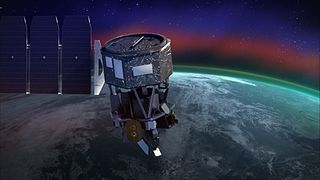 W
WThe Ionospheric Connection Explorer (ICON) is a satellite designed to investigate changes in the ionosphere of Earth, the dynamic region high in our atmosphere where terrestrial weather from below meets space weather from above. ICON studies the interaction between Earth's weather systems and space weather driven by the Sun, and how this interaction drives turbulence in the upper atmosphere. It is hoped that a better understanding of this dynamic will mitigate its effects on communications, GPS signals, and technology in general. It is part of NASA's Explorers program and is operated by University of California, Berkeley's Space Sciences Laboratory.
 W
WThe Multiple Paths, Beyond-Line-of-Sight Communications (MUBLCOM) satellite, built for the Pentagon's Defense Advanced Research Projects Agency, was launched in May 1999 by a Pegasus. Its mission was to demonstrate a capability to provide space-based digital voice and data communications to combat forces or commercial users that were previously considered out of range of standard radio communications systems.
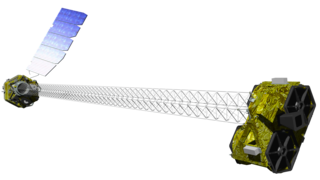 W
WNuSTAR is a space-based X-ray telescope that uses a conical approximation to a Wolter telescope to focus high energy X-rays from astrophysical sources, especially for nuclear spectroscopy, and operates in the range of 3 to 79 keV.
 W
WReuven Ramaty High Energy Solar Spectroscopic Imager was a NASA solar flare observatory. It was the sixth mission in the Small Explorer program (SMEX), selected in October 1997 and launched on 5 February 2002. Its primary mission was to explore the physics of particle acceleration and energy release in solar flares.
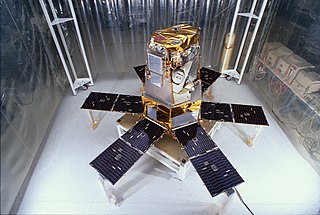 W
WThe Solar Radiation and Climate Experiment (SORCE) was a NASA-sponsored satellite mission that measured incoming X-ray, ultraviolet, visible, near-infrared, and total solar radiation. These measurements specifically addressed long-term climate change, natural variability, atmospheric ozone, and UV-B radiation, enhancing climate prediction. These measurements are critical to studies of the Sun, its effect on our Earth system, and its influence on humankind. SORCE was launched on 25 January 2003 on a Pegasus XL launch vehicle to provide NASA's Earth Science Enterprise (ESE) with precise measurements of solar radiation.
 W
WSpace Technology 5 (ST5) of the NASA New Millennium program was a test of ten new technologies aboard a group of microsatellites. Developed by NASA Goddard Space Flight Center, the three individual small spacecraft were launched together from the belly of a Lockheed L-1011 aboard the Pegasus XL rocket, on 22 March 2006. One technology involved antennas that were designed by computers using an evolutionary AI system developed at NASA Ames Research Center. The ST5 on-board flight computer, the C&DH system, was based on a Mongoose-V radiation-hardened microprocessor.
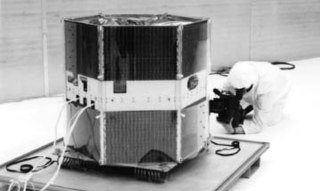 W
WThe Student Nitric Oxide Explorer (SNOE), also known as Explorer 72 and STEDI 1, was a small scientific satellite which studied the concentration of nitric oxide in the thermosphere. It was launched in 1998 as part of NASA's Explorers program. The satellite was the first of three missions developed within the Student Explorer Demonstration Initiative (STEDI) funded by NASA. The satellite was developed by the University of Colorado Boulder's Laboratory for Atmospheric and Space Physics (LASP) and had met its goals by the time its mission ended with reentry on December 13, 2003.
 W
WThe Submillimeter Wave Astronomy Satellite (SWAS) is a NASA submillimeter astronomy satellite, and is the third spacecraft in the Small Explorer program. It was launched on December 6, 1998 (UTC), from Vandenberg Air Force Base aboard a Pegasus XL rocket. The telescope was designed by the Smithsonian Astrophysical Observatory and integrated by Ball Aerospace, while the spacecraft was built by NASA's Goddard Space Flight Center. The mission's principal investigator is Gary J. Melnick.
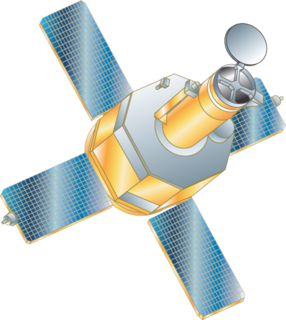 W
WTransition Region and Coronal Explorer (TRACE) was a NASA heliophysics and solar observatory designed to investigate the connections between fine-scale magnetic fields and the associated plasma structures on the Sun by providing high resolution images and observation of the solar photosphere, the transition region, and the corona. A main focus of the TRACE instrument is the fine structure of coronal loops low in the solar atmosphere. TRACE is the fourth spacecraft in the Small Explorer program, launched on April 2, 1998, and obtained its last science image on 21 June 2010 23:56 UT.
 W
WThe Wide Field Infrared Explorer (WIRE) was a satellite launched on 5 March 1999, on the Pegasus XL rocket into polar orbit between 409 and 426 km above the Earth's surface. WIRE was intended to be a four-month infrared survey of the entire sky at 21-27 µm and 9-15 µm, specifically focusing on starburst galaxies and luminous protogalaxies.